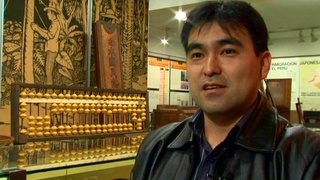Interviews
Both Japanese and American identities though Japanese dance
Oh yes, the kanzashi (Japanese ornamental hairpin). When I danced this number, you know, he’s telling…and I had a chopstick in my hair. And this lady was so impressed that she brought me this…there’s 12 of them – 12 that I put in my hair. And she gave me her…she said, “I was going to donate to the Museum, but I want to give it to you.” And I read in that book that it’s very important kanzashi as she gave it to me.
And then I could even say in the dance, I could say I’m a Japanese and this is the way I could dance. But still, I’m American. So the fan could tell you what we are. We were Japanese and still we were Americans. And then in the Japanese dancing, a fan. The fan could be like a rain or it could be a wave or it could be what it is. Or it could be a sword. You could fight with it. It could be all…the fan tells the story. It’s very important in Japanese dancing.
Date: November 30, 2004
Location: California, US
Interviewer: Nancy Araki and John Esaki
Contributed by: Watase Media Arts Center, Japanese American National Museum










